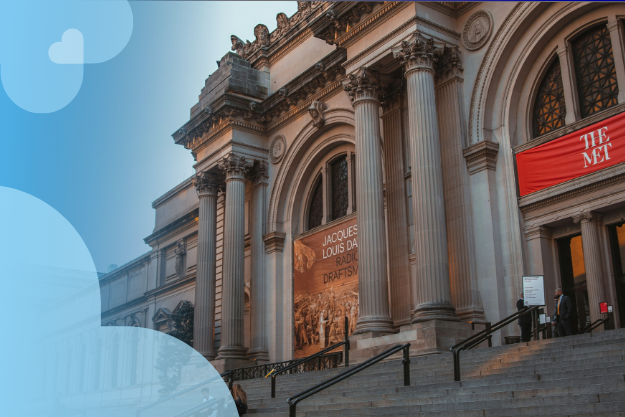Possibly no social marketing tool is gaining more popularity with eCommerce brands in recent years than user-generated content (UGC). And in a world where 54% of consumers always or regularly research content from real people before buying an item, it’s easy to see why. Clearly, consumers are craving marketing that isn’t overly pushy, and is trustworthy, and authentic when they’re making purchase decisions. Nothing checks those boxes in the same way UGC does.
But the UGC your brand might be interested in using comes in multiple forms. Maybe it’s a TikTok video where a customer excitedly talks about a new eyeliner you released recently. Or a picture on Instagram of them smiling in the mirror before going out in one of your dresses. It could be an X post (rebranded from “Twitter” in July 2023) gushing about their recent experience at one of your stores, or perhaps a submitted review praising the performance of your new line of athletic shoes.
Each one of those can be quite effective UGC content for various brands, but each one also comes with its own strengths and challenges for anyone choosing to put it to use. Let’s look at them all and get a feel for what might work best for your brand.

Download our tip sheet here
1. Video
By now, it’s likely you’re well aware of the power of video when it comes to social marketing. The simple fact is that video — especially short-form video — drives engagement more than any other content media across all social media channels, and there’s no sign of that trend slowing down.
Advantages
Engagement: Because consumers — particularly Gen Z and Millennials — engage with video more than any other type of social media content, these have powerful potential to reach far and wide.
Dynamism: With video, you not only see and/or read the consumer’s excitement, but you can hear them speak and see them move. That makes it more real. Like you’re seeing them in person. And that makes it feel more authentic and relatable, which is exactly what you want with UGC.
Versatility: Video clips can be shared on just about any social channel where your brand is active. It’s perfectly at home on TikTok, YouTube, and Instagram, but Facebook and X both fully support video as well.
Shoppability: What consumers see, consumers can get. Being able to make visual content like video directly shoppable — giving viewers a way to click straight through and buy what they see — gives video a huge advantage when it comes to UGC.
Challenges
Quality: While it’s great to have freely-provided endorsements from unpaid consumers on social, you also can’t control what you get. The video quality may or may not be up to your brand standards for a variety of reasons — though this can play in your favor, as it may add to the authenticity of the material. You’ll need to review each video thoroughly to make sure you’re not sharing something you wouldn’t want to.
Editing: In many cases, it’ll be necessary to edit the video before posting it — whether for length, quality, or branding — and you may need to use various tools to do so. Hopefully, you have the internal resources to handle this, but it's something you need to prepare for.
Most effective for
Brands that create products that really shine when brought to life with an enthusiastic customer, like fashion, beauty, and consumer electronics.
2. Images
A great image can be a hugely effective marketing tool when done right, with a smiling customer showing off your products in their own unique way. While video may get more overall engagement, images have plenty of their own strengths when it comes to identifying the right UGC and incorporating it into your brand marketing strategy.
Advantages
Shoppability: It’s not just video that can be made shoppable, but images do incredibly well with this as well. In some cases, images might even be better for direct purchases than video, given the viewer has plenty of time to see exactly what they’d be buying and make a decision to click through.
Simplicity: These days, everybody has what amounts to a photo studio in their pocket or purse. Today’s phones can do amazing things, and make just about anyone look like a pro. And while they can do video too, there are so many more variables to video than merely taking pictures. It takes just a few seconds for your customers to snap a pic and share their enthusiasm with their friends on social, and that gives images a big win.
Volume: Because it’s so simple to produce, consumer brands are likely to see more of this form of UGC than anything else. With the right listening tool in place, it shouldn’t be too difficult to find it, then put it through the necessary steps to get it ready for publication.
Challenges
Volume: Yes, this can be a double-edged sword. While it’s great to have plenty of options, if you’re a popular brand, you might have too many options. Given each image has to be identified, reviewed, chosen, permissioned, and then used in whatever way you deem fit, copious options can create a lot of work for your team.
Simplicity: Like volume, this is both good and bad. The good news with simplicity of creation is anyone can take pictures, and the bad news is anyone can take pictures. A lot of the images — even ones you otherwise like — aren’t going to pass muster for any number of reasons. It just makes finding a good way to vet them that much more important.
Most effective for
Brands that are visual-heavy, like Fashion and Beauty, can benefit here as they do with video, but images can work especially well for more inert products that don’t need as much of a human element to show off, like home decor and automobiles.
3. Text posts
Mostly the domain of Facebook and X — along with newer channels like Threads and Bluesky — text posts may not have the dynamic nature of video and images, but they can have a way of cutting through the noise and giving everyone a simple way to express their views.
Advantages
Universality: If taking pictures is simple, typing text is as basic as it gets. Even people who would never post a picture of themselves on social media might be comfortable just typing a few words. That means that, no matter what your product or target demographic, you might find UGC in text posts.
Tagging: Especially on X, if your brand has an active account there, it’s common for a customer to directly tag your brand’s account when talking about it. That can make your job of social listening easier when your future UGC can just show up right in your inbox.
Challenges
Non-visual: For brands that thrive on showing off their look — or the look they give their customers — pure text just isn’t likely to be as impactful as UGC that’s more visual.
Grammar: With text, bad grammar, spelling, and "textese" is something brands have to consider when vetting potential UGC content. Some limited shortening of words is probably OK, but you don’t want it to go so far that it’s hard for people to decipher. And using posts with bad grammar could both make your brand and the customer look bad.
Anonymity: When a real name isn’t attached to the post, that can negatively impact the credibility of the post, and that could make it seem less authentic to customers. You might want to be hesitant to use anonymous posts, even if you can get permission.
Most effective for
Brands that don’t rely on visuals so much for their appeal, but instead focus on people saying good things about them. This could include restaurant chains, food products, and some electronics.
4. Customer ratings and reviews
Whenever you can prompt a customer to directly submit a rating or review about your brand’s products, that’s a big deal. Even negative reviews can tell you a lot about how your products are being received, and can help you in further development. But positive ones are gold. A customer felt so strongly about your brand that they wanted others to know how great it was. In many cases, those can be impactful examples of UGC.
Advantages
Breadth: Often, when a customer cares enough to write a review, they’ll go fairly in-depth, really going into how they’ve used it, what they love about it, along with anything else they think people should know. They can not only be great marketing materials, but they can teach you — and your potential customers — a lot.
Importance: When you know that consumers consider customer reviews to be essential to their product research, you can gather the impact of highlighting these on your website and social channels. There are plenty of customers who won’t pay any attention to your social media at all, but they’ll go out of their way to find reviews from real customers before they make a buying decision.
Verification: In some cases, you might be able to append a “Verified purchaser” label to reviews, which can add significant weight to them when it comes to using them prominently as UGC material.
Challenges
Volume: Again, if you’re a popular brand, you’re not only going to get a lot of these, but they’re going to be all over the place, from your website to third-party retailers to social sites like Reddit. It’s virtually impossible to find or evaluate them all, so you’ll have to cherry-pick a bit to find what works for you.
Anonymity: Reviews can be anonymous. In fact, that’s sometimes by design, as that can allow them to speak more freely. However, anonymous reviews that don't go into a lot of detail in their praise may not strike consumers as being genuine, so be careful there.
Most effective for
Brands that offer products that consumers may need additional help in differentiating and evaluating — such as food and beverage containers or pet insurance — or that they may find complicated or difficult to understand.
The takeaway
UGC is an incredible marketing tool for brands that want to embrace authenticity and avoid looking like they’re directly selling to consumers whenever they can. It’s important to understand, though, that UGC comes in all shapes and sizes, and most brands can find the UGC route that best fits them and their main audience.






![[Reporte] Panorama influencer marketing 2023](/_next/image?url=https%3A%2F%2Fimages.ctfassets.net%2Fcpumif18y1gd%2F5DkZONyzIfZIoYl2zsWtQC%2Fdbcbe77926fd8bed0163eea17940a018%2FEMP090-Influencer_Social_Trends_Report_Cover_-_LP_-_625_x_417.png&w=3840&q=75)






















